Joe Blevins's Blog, page 52
January 14, 2022
Ed Wood's When the Topic is Sex: "Drag it Out" (1971)
 You'd never guess this is a man in drag. Very convincing cleavage.
You'd never guess this is a man in drag. Very convincing cleavage.
NOTE: This article continues my coverage of Ed Wood's When the Topic is Sex (BearManor Media, 2021).
The article: "Drag it Out." Originally published in Hit & Fun (Calga Publishing), vol. 2, no. 2, June/July 1971.
Excerpt: "I have a high voice when I want to use it, and I make up pretty damn well and I certainly have the figure for the dresses and other clothes like this angora sweater and mini-skirt I have on. But occasionally the more seasoned veteran saleslady will see through the deception. I've never met one who went off screaming rape, or murder. They giggle a lot, but that's about all there is to it."
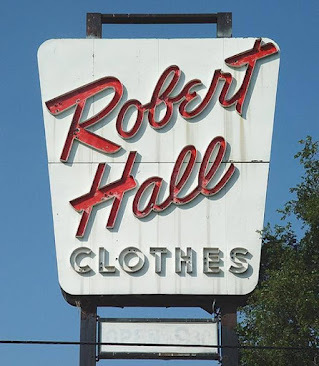 This is where Shirley shops!Reflections: For at least the third time in this book, Ed Wood interviews himself for the aptly-titled "Drag it Out." In this article, he plays two roles: an investigative reporter for Hit & Fun and a "true transvestite" named Shirley. Do I really need to keep pointing out that Shirley was Ed Wood's own drag name and that he gave this moniker to numerous characters in his short stories, novels, and films? Ed's fans should already know this.
This is where Shirley shops!Reflections: For at least the third time in this book, Ed Wood interviews himself for the aptly-titled "Drag it Out." In this article, he plays two roles: an investigative reporter for Hit & Fun and a "true transvestite" named Shirley. Do I really need to keep pointing out that Shirley was Ed Wood's own drag name and that he gave this moniker to numerous characters in his short stories, novels, and films? Ed's fans should already know this. What's important is that some of the Shirleys in the Wood canon are women (like the characters in Necromania and Orgy of the Dead), while others are men in drag (like the one in this article). Either way, to Ed Wood, Shirley is the epitome of femininity and sex appeal. The one Eddie interviews here boasts that he never wears men's clothing and is almost never detected.
I referred earlier to this particular Shirley as a "true transvestite." That's a term Ed Wood had been using since at least 1953, when he had Timothy Farrell say it in Glen or Glenda. It means a man who dresses as a woman habitually but is exclusively heterosexual. The Shirley in this article is married, and he proudly tells the interviewer that his wife "buys all [his] nighties and negligees." But don't think that this marriage is 100% perfect: "If she's had a few too many shots of whiskey she hates me and attempts tossing snide remarks." One has to wonder if this is Ed's portrait of his own wife, Kathy.
"Drag it Out" happens to be one of the articles in When the Topic is Sex that I've already reviewed on my blog. When I discussed this story back in November 2019 , I talked about the article's "positive, optimistic tone." Revisiting it in January 2022, I realize I may have oversold the sunniness of this story just a little. After all, Shirley does refer to homosexuality as a "sexual deviation," which sounds vaguely disreputable. But our "true transvestite" does not shun gay men. "We associate," he says, "but we don't associate if you get what I mean."
Was there anything new that jumped out at me this time? Well, Shirley mentions going to a clothing store called Robert Hall, which I hadn't heard of. One of the first "big box" retail chains, it started with a single store in Waterbury, Connecticut in 1937 before expanding to 350 locations in 36 states. The Robert Hall chain produced all its clothes domestically, including a factory near Ed Wood's hometown of Poughkeepsie. Unfortunately, this was what killed the business in 1977. Other clothing manufacturers outsourced their labor to foreign countries and were thus able to charge less than Robert Hall. (It seems like we as consumers should have learned a lesson from this. We didn't.)
All that's left of the once-mighty Robert Hall chain are some fading memories and a few catchy jingles. "You better buy clothes down at Robert Hall! There's real economy for all the family!" Shirley might agree.
Next: "From Birthday Suit to Shrouds" (1971)
Published on January 14, 2022 05:07
January 12, 2022
Ed Wood Wednesdays: The Wood Collaborator Odyssey, Part 24 by Greg Dziawer with Mike Hickey
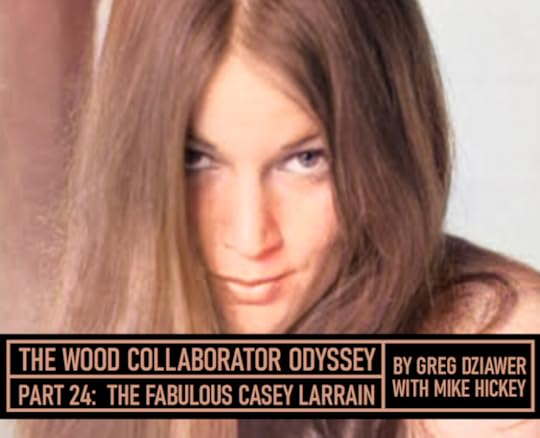 A headshot of Casey Larrain.
A headshot of Casey Larrain.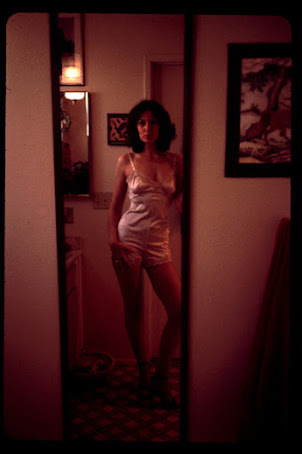 Casey Larrain strikes a pose circa 1981.This week, we turn our attention to Casey Larrain, the winsome brunette actress who memorably appeared with Ed Wood in several films in the late 1960s and early 1970s. I will let my friend Mike Hickey introduce Ms. Larrain:
Casey Larrain strikes a pose circa 1981.This week, we turn our attention to Casey Larrain, the winsome brunette actress who memorably appeared with Ed Wood in several films in the late 1960s and early 1970s. I will let my friend Mike Hickey introduce Ms. Larrain:I had known for a while that Mike Hickey had connected with Casey. Then, late last summer, my friend Rob Huffman—who had previously interviewed Casey—introduced me to her. We finally talked in September and have had many exchanges since. A special thanks to Casey for supplying heretofore unknown details about her life and work.
I'd first noticed Casey Larrain acting opposite Ed Wood in the notorious Love Feast (1969) and Nympho Cycler (1971). The more I saw of her in other movies, the more curious I became about her. Curious enough that when I heard she lived less than an hour from me, I looked her up and gave her a call. After some communication she agreed to meet with me for an interview. Wow!
On the day I drove to Chatsworth to meet with her, I became increasingly nervous. It can be awkward meeting new people under usual circumstances, let alone with me asking her the kinds of questions I was going to ask.
We ended up speaking for a couple of hours and had a really nice talk. She was very open to talking about anything I asked her about. I, of course, asked her about working with Ed Wood and Joe Robertson. She told me stories about doing scenes with John Holmes, which I had no idea had ever happened. I was also glad I got to tell her how great I thought she was playing a British snob in Joe Robertson's Lord Farthingay's Holiday (1972).
Since meeting Casey that day, we've kept in touch quite often. I've visited a few times to have items from my Casey collection signed by her. My wife and I have even attended a few of her annual Boxing Day parties! She's very cool, very with it, and just a great person. I'm glad to know her.
Published on January 12, 2022 17:12
Ed Wood's When the Topic is Sex: "Commentary: Article by 'T'" (1971)
 Is that supposed to be Ronald Reagan?
Is that supposed to be Ronald Reagan?
NOTE: This article continues my coverage of Ed Wood's When the Topic is Sex (BearManor Media, 2021).
The article: "Commentary: Article by 'T.'" Originally published in Belly Button (Calga Publishing), vol. 2, no. 3.
Excerpt: "I've got this thing about nylon stockings. I just love to feel nylon stockings on my legs. And sometimes I slip them over my arm, you know, like just before I put them on my legs. And that way I can really enjoy the feel of that cool mesh closing all around my soft flesh. Why, that gets me so turned on sometimes that I can feel the icy fingers running up and down my spine. Oh, not that I freak out, or anything like that. But it does turn me on, and as George Washington would say, that's no lie!"
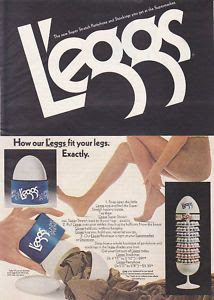 T's not-so-secret fetish.Reflections: Just as Ed Wood's short stories can be broken down into subgenres or sub-categories, so can his nonfiction articles. He likes to change things up occasionally, so he'll have different modes or styles as a writer. The particular subgenre we're talking about today is the fake interview. That's when Eddie pretends to talk to some nonexistent person about a potentially touchy subject. He'll do this in his full-length nonfiction books, too. The Oralists (1969), for instance, purports to include case studies of real people, but they're all just products of Eddie's imagination.
T's not-so-secret fetish.Reflections: Just as Ed Wood's short stories can be broken down into subgenres or sub-categories, so can his nonfiction articles. He likes to change things up occasionally, so he'll have different modes or styles as a writer. The particular subgenre we're talking about today is the fake interview. That's when Eddie pretends to talk to some nonexistent person about a potentially touchy subject. He'll do this in his full-length nonfiction books, too. The Oralists (1969), for instance, purports to include case studies of real people, but they're all just products of Eddie's imagination. Earlier in When the Topic is Sex, we read Ed's purported interview with actress Sherry Wine. And now, he's talking to a woman he identifies only as T about the subject of fetishes. You know what? I wish T were a real person. She seems like she'd be a lot of fun—a plain-spoken, somewhat vulgar lady with a healthy attitude about her own sex life and the sex lives of others. I don't know exactly why, but I get the feeling T drinks a bit and may have even imbibed a little right before this interview.
Anyway, T tells us that fetishists are everywhere, but there are two kinds: those who "swing right out in the open" and those who "keep things a secret." It's obvious that T prefers the former, since they're being more honest. "I don't hold no truck with people who can't admit themselves to themselves, if you follow my train of thought," she opines.
As for specific fetishes, she mentions a gentleman who goes out in public with a woman's shoe over his genitals. (Illustrator El Warpo has brilliantly captured this in the artwork that originally accompanied the story.) There's another man she knows who is really into rings, though she makes sure to point out that this jewelry-lover is strictly heterosexual. (Shades of Glen or Glenda.) When it comes to her own fetishes, T admits her love of nylon stockings but refuses to divulge more.
I know I just did this yesterday, but I was again reminded of an SNL sketch while reading this article. I could not help but think of T as looking and talking like Cecily Strong's outspoken, somewhat incoherent "Cathy Anne" character. I debated whether or not to include that detail in my review, but I figured I owed it to you (and T) to be honest. When I read this article, I imagined Cecily Strong saying it on Weekend Update as one of her rambling editorials.
By the way, T also feels that not every fetish is sexual. Do you like apple pie? That's a fetish. Do you listen to classical music? Another fetish. And don't even get her started about baseball fanatics! They're the biggest fetishists of all! She may have a point with that last one, at least based on the 1977 novelty record "Baseball Card Lover" by Rockin' Richie Ray.
Next: "Drag it Out" (1971)
Published on January 12, 2022 05:05
January 10, 2022
Ed Wood's When the Topic is Sex: "When Then the Topic is Sex" (1971)
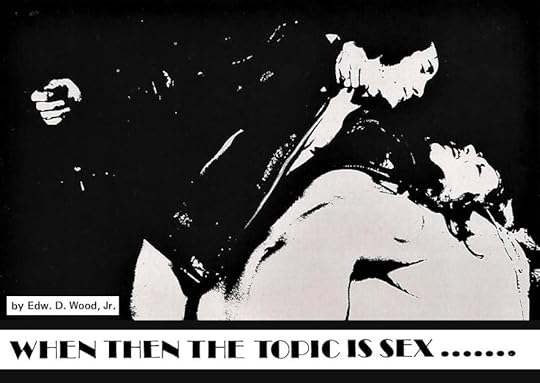 This is almost the title story from this collection.
This is almost the title story from this collection.
NOTE: This article continues my coverage of Ed Wood's When the Topic is Sex (BearManor Media, 2021).
The article: "When Then the Topic is Sex." Originally published in Garter Girls (Pendulum Publishing), vol. 6, no. 1, February/March 1971. Credited to Edward D. Wood, Jr.
Excerpt: "Today there are any number of magazines on nearly all the magazine book shelves which tell of the delights and the pleasures which might be derived from the sado/masochistic actions. And it is not always that they are practicing a safe and sane way of capturing their sexual pleasures. People have been known to be seriously hurt, maimed, crippled even killed through the accidental applications of torture."
Reflections: I've been a regular viewer of Saturday Night Live since I was a kid, so I cannot help but compare just about all the media I consume to old SNL sketches. Forgive me.
Specifically, the Ed Wood article "When Then the Topic is Sex" reminded me of an ad parody that SNL first aired on December 7, 1985. The sketch starts with a sharply-dressed announcer (Rex Robbins) walking past a power plant and talking about America's energy consumption. But then it cuts to a ranch, where the same announcer (who has ditched his suit in favor of denim work clothes) is now talking about cowboys. Another cut, and now he's walking through a field and discussing "pollen and other irritants." Yet another cut, and he's on Wall Street (back in his suit) and telling us we need "sound financial security." One final cut, and he's ambling down a sunny suburban street and drinking a can of soda he declares to be "cracklin' good." Finally, we arrive at the tagline: "The Ad Council: Wasting your time in various ways... for no good reason."
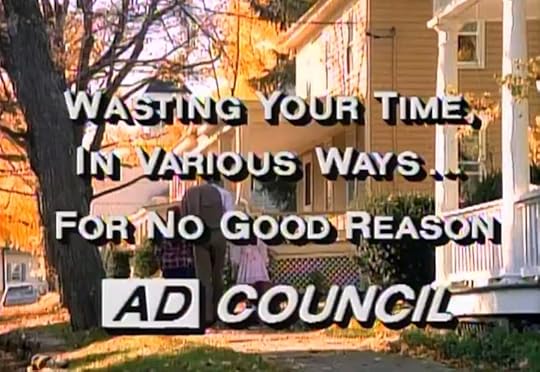 Notice the use of ellipses. Very Ed Wood-esque.
Notice the use of ellipses. Very Ed Wood-esque.That's just what it feels like to read "When Then the Topic is Sex." Ed starts out by saying that we're all discussing sex more openly and honestly these days. Okay, that's nice, but then he starts jumping from topic to topic: swingers, bathroom graffiti, obscene phone calls, fetishists, sado-masochists, transvestites, sweaters (of course!), bathroom graffiti (again), sexual positions, swingers (again), and finally religion. (Eddie insists the Bible is the dirtiest book of them all.) What is this article about? Who is the intended audience? What point is Ed Wood trying to make, if any?
Knowing the original venue for this article does not help, by the way. It was first printed in a magazine called Garter Girls, but Eddie doesn't mention garters even once. That figures. I've reviewed other Ed Wood stories from Garter Girls, and they weren't about garters either.
At his most focused, Ed does devote several paragraphs to swingers, i.e. those engaged in wife-swapping and group sex. He also calls them "switchers," a term I hadn't heard before. But if this article is for them, what was all that stuff about sweaters? And which gender writes filthier words on bathroom walls? And what to do if you get an unwanted obscene phone call? Ed seemingly went into this article with no battle plan whatsoever. He just sat down and started typing.
One last aside: Ed uses the term "switchman's picnic" at one point in this article. That was certainly a new one on me, so naturally I had to Google it. The term is not common, but Ann Landers used it in a column from 1962 . Her article is such a doozy that I'm begging you to read it.
Next: "Commentary: Article by 'T'" (1971)
Published on January 10, 2022 18:02
January 9, 2022
Ed Wood's When the Topic is Sex: "The Sweater Girl" (1973)
 "Was it the girl or the sweater?"
"Was it the girl or the sweater?"
NOTE: This article continues my coverage of Ed Wood's When the Topic is Sex (BearManor Media, 2021).
The article: "The Sweater Girl." Originally published in Gallery (Gallery Press), vol. 2, no. 2, April/May 1973. Credited to Edward D. Wood, Jr.
Excerpt: "Sex in a minor way had once more found its way to the screen . . . and not through nudity. The girls were fully clothed yet they were oozing sex and few males in the audience could do little but sit on their hands in anticipation . . . and of course movies being what they were then . . . the trend was set and the ladies raced out to buy the latest number."
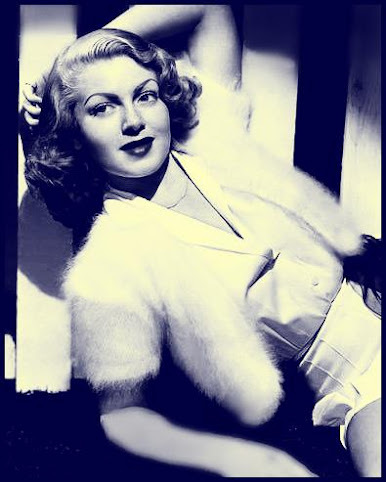 The shot of Lana Turner that obsessed Ed Wood.Reflections: When publishing magnate Charles Foster Kane (Orson Welles) dies in Citizen Kane (1941), the last thing he ever says is the word "Rosebud," referring to a sled he'd had as a small child. History does not record the last utterance of filmmaker and writer Edward Davis Wood, Jr. (1924-1978), but it might well have been the word "sweaters." They were apparently never far from his mind.
The shot of Lana Turner that obsessed Ed Wood.Reflections: When publishing magnate Charles Foster Kane (Orson Welles) dies in Citizen Kane (1941), the last thing he ever says is the word "Rosebud," referring to a sled he'd had as a small child. History does not record the last utterance of filmmaker and writer Edward Davis Wood, Jr. (1924-1978), but it might well have been the word "sweaters." They were apparently never far from his mind.You have never loved anything in your life the way Ed Wood loved women's sweaters. Not only did Eddie put them into his films as often as possible, he wrote about them in his novels, his nonfiction books, his short stories, and his magazine articles. He wore them and cherished them in real life, too. In Nightmare of Ecstasy, his widow Kathy Wood says that, when she and Eddie were evicted from their apartment in December 1978, the few items they managed to save were the script for I Woke Up Early the Day I Died and "this one angora sweater that he loved so much."
Sweaters have already been a motif throughout When the Topic is Sex, and today they finally get an article all to themselves. In "The Sweater Girl," Ed Wood examines the entire history of these garments, from their humble origins (when they were "bulky" and "shapeless") to their glamorous Hollywood heyday. As Ed Wood sees it, movie producers of the 1930s put actresses in tight sweaters as a way of getting sex onto the big screen without offending the censor too much. Eventually the censors got wise and put an end to the era of the "sweater girl."
In addition to the movies themselves, Ed has fond memories of publicity stills of actresses Lana Turner and Ann Sheridan. And I mean very specific publicity stills. For Turner, he remembers a shot of her "sitting on one hip in front of a short fence" while wearing a "short sleeved, white angora slip over." Meanwhile, he recalls a photo of Sheridan "leaning out of the window of her studio bungalow" while modeling a green angora creation. I believe I located the Turner picture, but the Sheridan one eluded me.
The popularity of these actresses and other sweater-wearers caused young women everywhere to rush to the nearest department store and imitate the style themselves. Back then, sweaters were available in "all the colors and the styles." Eddie has particular nostalgia for a type of sweater he calls "La Conga." I checked some old newspapers from the 1940s, and sure enough, there were a few ads for these items. Here's one from the November 1, 1940 edition of The St. Louis Star and Times.
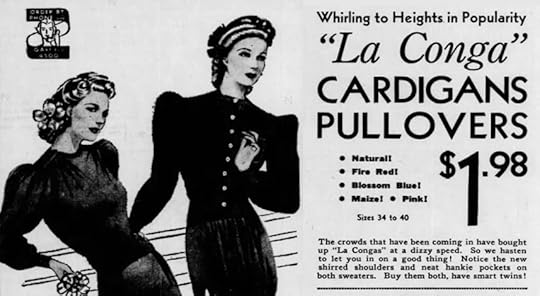 "Buy them both, have smart twins."
"Buy them both, have smart twins."Why is Ed Wood writing an entire article about sweaters in April 1973? Well, according to him, sweaters had made a comeback during the previous holiday season. Presumably, he's referring to Christmas 1972. I checked this assertion also, and it seems to be accurate. The December 27, 1972 edition of The Charlotte Observer has a large feature story by Tavay Able called "Old or New, the Sweater is in Style." Sample quote from the article: "Local retailers say this is the biggest year for sweaters in a long time and report that sales have been extremely heavy since November."
 Sweaters were hot in 1972.
Sweaters were hot in 1972.No one would have been happier to hear this news than Ed Wood.
Next: "When Then the Topic is Sex" (1971)
Published on January 09, 2022 14:37
Ed Wood's When the Topic is Sex: "The Fabulous Jane, Jayne & Marilyn" (1972)
 Ed Wood pays tribute to three great stars. Or six great stars, depending on how you look at it.
Ed Wood pays tribute to three great stars. Or six great stars, depending on how you look at it.
NOTE: This article continues my coverage of Ed Wood's When the Topic is Sex (BearManor Media, 2021).
The article: "The Fabulous Jane, Jayne & Marilyn." Originally published in Dynamic Films (Pendulum Publishing), 1972. Credited as Edward D. Wood, Jr.
Excerpt: "We must remember that the breast work on most women were tied down to the boyish look during the twenties and the early thirties, so by the time the forties came there was a new generation coming along and they had not been so flattened out. Then the fifties and the sixties and they were well out in front again."
Reflections: First of all, let's get something straight. In the history of cinema, there are a few examples of alleged "one-film wonders," i.e. actors and actresses who are only widely known for one role: Klinton Spilsbury (The Legend of the Lone Ranger), Haing S. Ngor (The Killing Fields), Harold Russell (The Best Years of Our Lives), etc. As critic Merwyn Grote put it, there is a "tendency of actors plucked from obscurity for a once-in-a-lifetime role to be just as quickly drop-kicked back into obscurity."
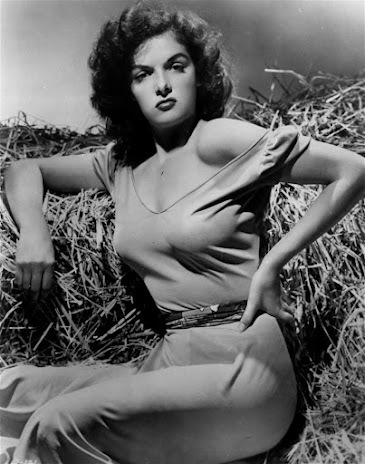 Jane Russell in The Outlaw.Jane Russell (1921-2011) should never be counted among their ranks. While it's true that the Minnesota-born actress is most closely associated with her cleavage-bearing role as Rio McDonald in Howard Hughes' infamous Western The Outlaw (1943), she acted in films for three decades and appeared sporadically on TV after that, finally retiring in the mid-1980s. The Outlaw isn't even Jane's only appearance in a classic, since she also starred with Bob Hope in The Paleface (1948) and Marilyn Monroe in Gentlemen Prefer Blondes (1953).
Jane Russell in The Outlaw.Jane Russell (1921-2011) should never be counted among their ranks. While it's true that the Minnesota-born actress is most closely associated with her cleavage-bearing role as Rio McDonald in Howard Hughes' infamous Western The Outlaw (1943), she acted in films for three decades and appeared sporadically on TV after that, finally retiring in the mid-1980s. The Outlaw isn't even Jane's only appearance in a classic, since she also starred with Bob Hope in The Paleface (1948) and Marilyn Monroe in Gentlemen Prefer Blondes (1953). Over the years, despite her infamous screen debut, Jane Russell even managed to gain a measure of critical respect. In the book Cult Movie Stars (1991), Danny Peary attests that Jane is "the funny, sexually aggressive, confident female Jayne Mansfield might played, if she had Russell's talent."
In "The Fabulous Jane, Jayne & Marilyn," Ed Wood revisits the controversy surrounding The Outlaw and its innuendo-laden advertising campaign. (Sample slogan: "What are the two greatest reasons for Jane Russell's rise to stardom?") Although this article is largely affectionate in its tone, Eddie seems to feel that this notorious movie was the actress' only claim to fame and says that "many of the young today won't remember the name of Jane Russell." Keep in mind that Russell had been appearing in films until just a couple of years before this article appeared. In retrospect, it's difficult to fathom that The Outlaw caused such outrage among censors and religious groups, just by featuring some cleavage and some innuendo-laden dialogue. It took a lot less to get people fired up in the 1940s, I guess.
Free-associating as usual, Ed uses the Outlaw brouhaha as a jumping-off point to talk about various sex symbols in the movies, particularly those with large breasts (or "mammary globes" in Wood speak). Although they're given equal billing with Jane Russell in the title of this article, Marilyn Monroe and Jayne Mansfield are basically afterthoughts here. Of Ms. Mansfield, Ed writes about how well the busty, bubbly blonde actress filled out a sweater: "She could make the fuzziest and the bulkiest knits look like they had been molded to her frame." As for Marilyn, Ed says she "achieved much more of the stardom status than did most of her counterparts" but was "ill-fated."
Even more interesting, toward the end of the article, Ed Wood starts talking about "underground films" as the new vanguard for sex on the big screen:
The underground films make no pretense at being anything but what they are. They are making sex pictures and in order to show the realism they profess to show, they've got to come across. Not all of the girls are fine actresses, in fact most of them can be considered hard-down bad. But they are both beautiful of face and body, and that's what the audience wants to see. Therefore the underground producers are showing life in the raw . . . but life as it is. And they are showing the naked body of the girls, as well as the males in order to get their point across.I'm not exactly sure which films he's referring to. It seems unlikely that he was discussing the boundary-pushing 1960s art flicks of Kenneth Anger (Scorpio Rising), Jack Smith (Flaming Creatures), Andy Warhol (Chelsea Girls), the Kuchar Brothers (Sins of the Fleshapoids), and John Waters (Eat Your Makeup). While those "underground" movies—and others like them—did feature sexually-explicit content, it's not the kind that would get Ed Wood's blood boiling. Perhaps Eddie is simply using the term as a catch-all to describe any hardcore and softcore films being made outside the studio system by indepdendent producers.
Next: "The Sweater Girl" (1973)
Published on January 09, 2022 09:10
January 8, 2022
Ed Wood's When the Topic is Sex: "16MM Beaver" (1971)
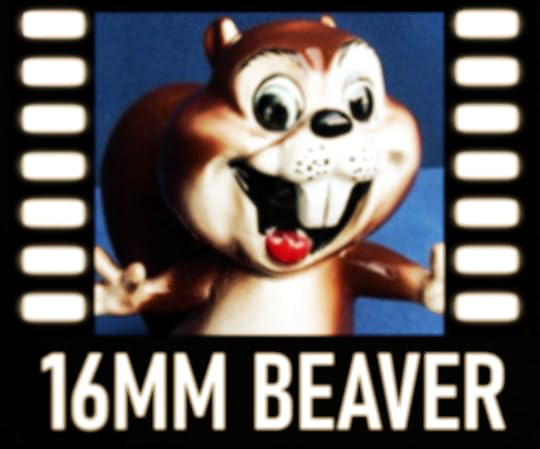 "Brush-a, brush-a, brush-a," says Bucky Beaver.
"Brush-a, brush-a, brush-a," says Bucky Beaver.
NOTE: This article continues my coverage of Ed Wood's When the Topic is Sex (Bear Manor Media, 2021).
The article: "16MM Beaver." Originally published in Young Beavers (Pendulum Publishing), vol. 5, no. 2, April/May 1971. No author credited.
Excerpt: "Since the adult films are no longer confined to hole-in-the-wall theatres on some dingy downtown back street and have moved uptown they have gained a tremendously sophisticated audience of both men and women who are not going to be satisfied with a mediocre anything . . . let alone motion picture presentations. These are the people who have the fare and don't mind spending it if they get their money's worth."
 A turning point, according to Ed Wood.Reflections: As Ed Wood has chronicled the history of adult movies in When the Topic is Sex, there have been a few consistent themes he mentions time and again. Pornographic films are improving from a technical standpoint, Eddie tells us, with superior sound and picture. They are also becoming more realistic, thanks to location shooting and more plausible acting and writing. Above all, they are becoming more explicit, with more parts of the body being shown and more sexual acts being depicted in ever-greater detail. All of this, he says, comes from audience demand. It is the discriminating ticket buyer who has improved the sex film.
A turning point, according to Ed Wood.Reflections: As Ed Wood has chronicled the history of adult movies in When the Topic is Sex, there have been a few consistent themes he mentions time and again. Pornographic films are improving from a technical standpoint, Eddie tells us, with superior sound and picture. They are also becoming more realistic, thanks to location shooting and more plausible acting and writing. Above all, they are becoming more explicit, with more parts of the body being shown and more sexual acts being depicted in ever-greater detail. All of this, he says, comes from audience demand. It is the discriminating ticket buyer who has improved the sex film.The crudely-titled article "16MM Beaver" includes all of these themes but focuses most especially on the depiction of pubic hair on the big screen. Eddie treats this as quite a novelty. Apparently, just a few years earlier, viewers had to make do with "tittie" films in which the actresses were only shown nude from the waist up. But even full-frontal nudity wasn't enough for some viewers. Abusing his trademark ellipses, Eddie writes: "Upon first entering the public viewing market, ["beaver" flicks] were almost shouted down as . . . shocking . . . but they remained . . . and the more who viewed, the more the viewer grew tired of seeing a lone girl on the screen exercising her pubic hairs and the lips of her cunt."
Most film historians will point to Gerard Damiano's Deep Throat (1972) and the Mitchell Brothers' Behind the Green Door (1972) as the movies that brought hardcore pornography to a wider audience. But Eddie points to a now-forgotten movie as the real turning point: the quasi-documentary Sexual Freedom in Denmark (1970) , directed by John Lamb under the pseudonym M.C. von Hellen. Eddie refers to this movie by a couple of names, including Sex in Denmark and Sexual Freedom in Copenhagen. Under any title, it features a couple of actresses with Wood connections: Uschi Digard (of The Only House in Town) and Suzanne Fields (of The Undergraduate). Sexual Freedom in Denmark was one of many pornographic features that attempted to stay one step ahead of the censors by presenting itself as educational. In this aspect, Ed Wood compares it to the notorious "sex hygiene" films shown to American servicemen.
Perhaps the most noteworthy aspect of "16MM Beaver" is that a large portion of it is devoted to an interview with a 22-year-old adult film actress called Sherry Wine. ("Not her real name," Eddie explains, "but one she prefers to use in the adult flicks.") The only Sherry Wine I could find was an obscure actress who appeared in the Harry Novak-produced blaxploitation film The Black Connection (1974) . Since Sherry speaks with a distinctly Wood-ian style, I'll assume she's fictional and that Eddie is "interviewing" himself.
Nevertheless, Sherry gives us an insider's perspective on the adult film industry. She says there is fierce competition among the actresses, not just for roles but to see who can grow the thickest, most plentiful pubic hair. Apparently, audiences of 1971 would not tolerate a hairless crotch. "A lot of the girls got taken in by the hair growing lotions," Sherry says. "They spread all that goo all over their pussy at night, before they went to bed, and slid all over the sheets." The world was a very different place half a century ago.
In some ways, Ed saw changes on the horizon and predicted them accurately. It looks like the term "porno chic" first entered the lexicon circa 1971, the very year this article was published. Eddie doesn't use that term here, but he does see the adult movie going upscale, playing in more respectable theaters and attracting a higher class of patron. He also seems to envision the home video revolution that would be in full swing a decade later. "A quick look into the immediate future is the cassette which will be affixed to the back of our home television set," he writes. "Again this will make the adult film an even more intimate entertainment and without the applause or laughter or tears of the masses in a theatre, the smaller groups watching undoubtedly will be more critical."
In all of his writing, both for the screen and the page, Ed Wood has a tendency to start philosophizing and free-associating. I think that's why so many of his movies, from Glen or Glenda (1953) to The Young Marrieds (1972) include rather pompous and pretentious narration. This article ends with a beautiful yet incoherent Wood diatribe:
Walk up to any window and we will see life . . . walk up to any theatre box office and we will see life springing out at us with the imagination and the aforethought that only the imaginative can bring us, And those imaginative movie makers are doing all in their power to bring it to the audiences "as it is" and with all the professional knowledge at their command. The '70's ahead promise the many changes indicated in this writing and many more which are still on the plotting boards. And some still in the brains of their creator who finds much mental anguish with the Frankenstein of competition.That's right. He ends this article about porno movies with an allusion to Frankenstein.
Next: "The Fabulous Jane, Jayne & Marilyn" (1972)
Published on January 08, 2022 13:47
January 7, 2022
Ed Wood's When the Topic is Sex: "Book Reviews" (1969)
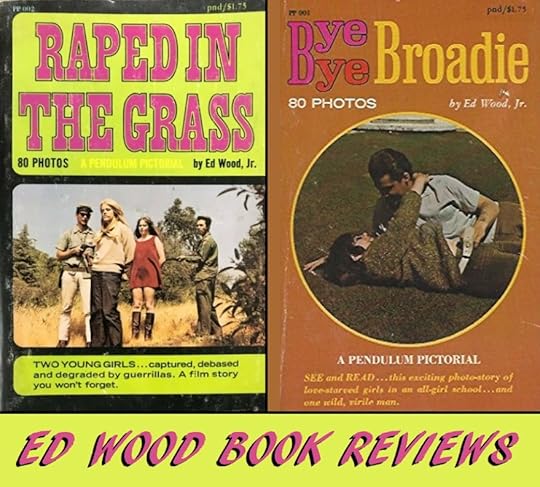 Ed Wood gets to review himself in the pages of Young Beavers magazine!
Ed Wood gets to review himself in the pages of Young Beavers magazine!
Note: This article continues my coverage of Ed Wood's When the Topic is Sex (BearManor Media, 2021).
The article: "Book Reviews." Originally published in Young Beavers (Pendulum Publishing), vol. 2, no. 6, February/March 1969. No author credited.
Excerpt: "Author Ed Wood, Jr. has pulled out all the stops in recreating the story in prose form which is intended for a strictly adult audience. His smooth style and machine gun action dialogue carry the reader along to a smashing climax which won't be divulged here."
Reflections: Adult magazine and book publisher Bernie Bloom was always willing to experiment with new formats in the hopes of separating horny customers from their money. Give 'em something new, something they haven't seen before. Among Bernie's most baffling and outrageous publications were the Pendulum Pictorials he began releasing in 1968. Each one boasted a cover price of $1.75 (that's fifteen bucks in today's money) and promised the reader "80 PHOTOS."
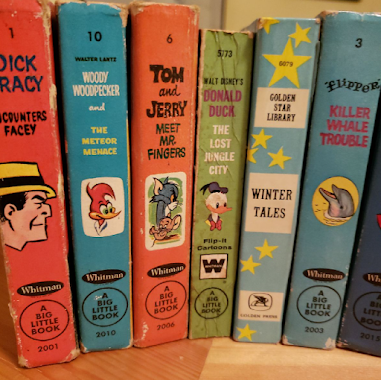 Some classic Big Little Books.These books are real oddities, even by 1960s porn standards. They're not exactly novels, and they're not exactly magazines either. Instead, they combine photographs and text to tell very convoluted stories—sort of like fumetti, but not formatted like a comic book. Instead, think of them as the pornographic equivalent of
Big Little Books
. Remember those from your childhood? I wonder if that's where Bernie got the idea.
Some classic Big Little Books.These books are real oddities, even by 1960s porn standards. They're not exactly novels, and they're not exactly magazines either. Instead, they combine photographs and text to tell very convoluted stories—sort of like fumetti, but not formatted like a comic book. Instead, think of them as the pornographic equivalent of
Big Little Books
. Remember those from your childhood? I wonder if that's where Bernie got the idea.The Pendulum Pictorials of which I am aware are the following:
PP01 Bye Bye Broadie (1968) credited to Ed Wood, Jr.PP02 Raped in the Grass (1968) credited to Ed Wood, Jr.PP03 The Erotic Spy (1968) credited to Abbott SmithPP04 Prison Passion (1968) credited to Harmon Wold, Jr.PP05 The Nazi Field Whores (1968) credited to Michael SnowPP06 The Svengali of Sex (1968) credited to Edgar Andrews
Some have speculated that Abbott Smith, Harmon Wold, Jr., Michael Snow, and Edgar Andrews are all pseudonyms for Ed Wood. Others dispute this, in whole or in part. That's another article for another time. For now, let's concentrate on the first two Pendulum Pictorials, Bye Bye Broadie and Raped in the Grass. Both of these are credited to Ed, so their place in the canon is secure.
The Pendulum Pictorials were marketed as adaptations of film scripts, but this was pure hogwash, strictly ballyhoo. No such movies exist. Apparently, the way they were made is that a photographer would shoot a series of related pictures, and then a writer would concoct a story around them.
Having read through a few of these, I'm sure the photographs must have come first. No writer—not even Ed Wood at his booziest and most delirious—would create plots as nonsensical and far-fetched as these out of thin air. The Pendulum Pictorials also stand out for combining sex and violence in particularly depraved and extreme ways. This series brought out Ed's nastiest tendencies as a writer. If you want to wallow in filth, start here. If you're limiting yourself to just one, make it Bye Bye Broadie, whose ending is so absurd that even I was caught off-guard by it.
Naturally, Bernie Bloom wanted to promote his Pendulum Pictorials, and what better place than in the pages of Pendulum's own magazines? Therefore, the February/March 1969 issue of Young Beavers contained glowing, albeit unsigned, reviews of both Raped in the Grass and Bye Bye Broadie. Essentially, Ed Wood is reviewing himself. (And now, I'm reviewing Ed Wood reviewing himself!)
Although presented as reviews, these are really advertisements. I'd like to think Eddie had some fun patting himself on the back. "In bringing out two titles so close to one another," he writes, "it is a distinct tribute to his not inconsiderable powers as a novelist with a demonstrated ability to handle a variety of subjects." This is the Eddie-as-huckster we see so often in Tim Burton's Ed Wood (1994), the consummate salesman shamelessly pitching projects to producers and backers.
Next: "16MM Beaver" (1971)
Published on January 07, 2022 18:18
January 6, 2022
Ed Wood's When the Topic is Sex: "Enough Bread for Everybody" (1972)
 You wouldn't guess it from the title, but "Enough Bread for Everybody" is really about race relations.
You wouldn't guess it from the title, but "Enough Bread for Everybody" is really about race relations.
NOTE: This article continues my coverage of Ed Wood's When the Topic is Sex (Bear Manor Media, 2021).
The article: "Enough Bread for Everybody." Originally published in Black and White (Pendulum Publishing), vol. 2, no.1, April/May 1972. Credited to Edward D. Wood, Jr.
Excerpt: "The total earnings for the Negro rose swiftly. In 1962 during July and August the Negro payroll was a minute $3,600. But during that same period in 1963 the rise in the figure started looking like the blacks were in the black . . . $27,000."
Reflections: "Enough Bread for Everybody" will come as an eye-opener to many modern readers, because it proves that the debate over diversity and representation in motion pictures is nothing new. This article was published 50 years ago, but some of the issues in it are still being talked about—and fought about—today.
Put simply, this article is about how Black people (or "Negroes," as Ed puts it) have fought for employment and respect in the motion picture industry over the years. For decades, Black actors and technicians struggled to find work in Hollywood. D.W. Griffith's landmark Birth of a Nation (1915) portrayed its Black characters very negatively, while making the Ku Klux Klan the heroes, but Griffith didn't even employ any actual Black people. As Ed Wood explains, "All the black people were played by black-faced whites." Blacks were similarly denied admittance into the entertainment industry unions.
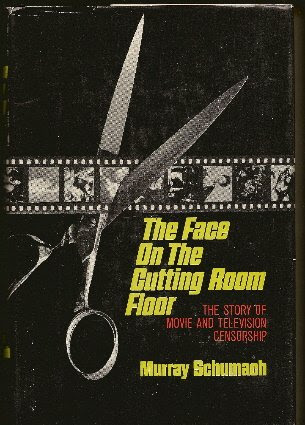 An important source for Ed Wood.According to Ed Wood, the situation only began to change because of pressure from the National Association for the Advancement of Colored People (NAACP). Curiously, Eddie points to June 25, 1963 as a particular turning point. That's when the NCAAP's labor secretary, Herbert Hill (1924-2004) met with Beverly Hills chapter president James L. Tolbert (1926-2013) to draft a list of specific demands to present to the major studios. "That's when the stuff hit the fan," says Ed.
An important source for Ed Wood.According to Ed Wood, the situation only began to change because of pressure from the National Association for the Advancement of Colored People (NAACP). Curiously, Eddie points to June 25, 1963 as a particular turning point. That's when the NCAAP's labor secretary, Herbert Hill (1924-2004) met with Beverly Hills chapter president James L. Tolbert (1926-2013) to draft a list of specific demands to present to the major studios. "That's when the stuff hit the fan," says Ed.Ed Wood's feelings on this issue are complicated and contradictory. On the one hand, he acknowledges that Blacks have been underemployed and grossly misrepresented in Hollywood. On the other hand, he seems to view the protests over Gone with the Wind (1939) and Song of the South (1946) as examples of censorship. And the NAACP's ban on Black actors playing domestic roles might actually be preventing its members from finding employment! Furthermore, he suggests that any political pressure group, including the NAACP, will inevitably demand some form of censorship from the media.
That's why I say "Enough Bread for Everybody" is a shockingly current article, despite being from a half century ago. Gone with the Wind and Song of the South remain highly controversial today, and social media is consumed with the topic of whether so-called "political correctness" constitutes censorship. The most optimistic part of the article is the title. Eddie seems to be saying that, ultimately, motion pictures generate enough money for people of all races and creeds.
I've said that some of the articles in When the Topic is Sex are vague when it comes to names, dates, titles, etc. That's not the case here. "Enough Bread for Everybody" names plenty of actors and movie titles, including at least one film I'd never heard of: Curtis Bernhardt's comedy Kisses for My President (1964), featuring Polly Bergen as America's first female Commander-in-Chief. Time seems to have forgotten this movie, but Ed deems it noteworthy that the producers hired "40 Negroes."
Also of note here is that Ed Wood repeatedly cites a book called The Face on the Cutting Room Floor: The Story of Movie and Television Censorship (1964) by Murray Schumach. In a great deal of his nonfiction, Ed seems to be "winging it." But, when the situation called for it, he would actually do a modicum of research. I'm guessing Eddie cribbed quite a bit from the Schumach book when writing this article.
Next: Ed Wood book reviews (1969)
Published on January 06, 2022 18:54
January 5, 2022
Ed Wood's When the Topic is Sex: "The Documentary" (1971)
 In this illustration, it looks like Harvey Pekar is making a documentary of his own.
In this illustration, it looks like Harvey Pekar is making a documentary of his own.
Note: This article continues my coverage of Ed Wood's When the Topic is Sex (BearManor Media, 2021).
The article: "The Documentary." According to Ed Wood's resume, this was written in 1971. Further publication data unknown.
Excerpt: "Although the man with the camera still travels to far off lands in search of adventure and to bring new sights to the screen, the new scope of realism gives him an insight to the modern world all around us. We also find that the undersea kingdom is of as much interest to us as Africa was to the generation of the thirties. Here we open up possibilities never dreamed of only a few years ago. And since most of us will never dive down to the depths of the seas the filmed reports become our diving suit and helmet. And we can watch the glamour of the scenes without fear of our oxygen supply ever failing us and leaving us trapped down there with the fishes."
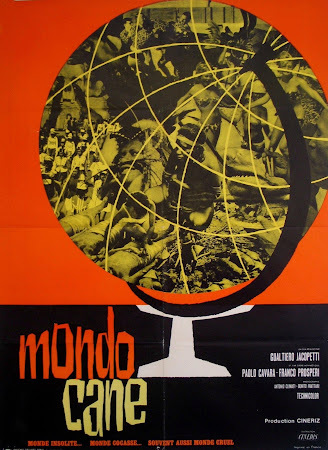 A successful documentary from the 1960s.Reflections: "The Documentary" stands out from the other articles in When the Topic is Sex for a number of reasons. Most obviously, the topic here isn't sex. Instead, Ed Wood writes with great sincerity about his admiration for documentaries and the brave men who make them. I kept waiting for the article to become explicitly sexual—sex being a popular subject for documentaries, then and now—but it never did. Textually, this is Ed at his most G-rated.
A successful documentary from the 1960s.Reflections: "The Documentary" stands out from the other articles in When the Topic is Sex for a number of reasons. Most obviously, the topic here isn't sex. Instead, Ed Wood writes with great sincerity about his admiration for documentaries and the brave men who make them. I kept waiting for the article to become explicitly sexual—sex being a popular subject for documentaries, then and now—but it never did. Textually, this is Ed at his most G-rated.Other than the now-lost industrial films he made for Autonetics in the early 1960s, Ed never attempted to make a documentary of his own to my knowledge. I suppose Glen or Glenda (1953) has a somewhat documentary-like tone during certain passages, such as those narrated by Timothy Farrell. The characters in that film, however, are fictional, and the footage is either staged or stock. Perhaps, in this article, Eddie is daydreaming about what it would be like to make unscripted films.
For one thing, as he points out, there are economic advantages to being a documentarian. Reality-based films do not require large crews or expensive equipment. Reshoots, if necessary, will not cost much either. "The scene can be shot over and over again," Ed claims, "and still there won't be too much of a dent in the producer's budget." Again, as with the other articles in the book, Ed constantly has money on his mind.Ed also mentions that the "newly developed, high speed film" now allows documentarians to shoot with only natural light, such as that provided by the sun and moon. Later, he declares: "With modern technology nothing is beyond the scope of the documentary producer and his camera." Maybe Ed Wood's secret desire was to become the next D.A. Pennebaker.
If Ed were somehow with us in 2022—alive, in his prime, and ready to make movies again—I think he would be amazed by the existence of digital video and excited about its potential. The low-budget (and no-budget) filmmaker of today has technological advantages that Eddie would have killed for. A director can shoot footage on his phone and edit it on his laptop, then distribute it himself on the internet, all without visiting a processing lab or attending a day of film school. Eddie would be in hog heaven. Finally, the independent filmmaker has been set free!
Next: "Enough Bread for Everybody"
Published on January 05, 2022 18:07



